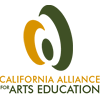Reviewing Existing Arts Education Funding
As part of the arts education data collection and analysis in STAGE 2, your team should have a good idea of what is currently being spent by the district. Based on the priorities identified in the Strategic Plan, you can begin to develop an overall budget proposal for strengthening arts education in your district. There are a number of potential sources of funding for arts education programs. Many districts have found that a combination of funding from a variety of sources is necessary to provide high quality programs.
District Funds
General Funds
Every public school district receives per pupil funding allocated by the state based on average daily attendance. Some schools apply portions of these funds toward arts education programs, primarily in the form of teacher salaries.
Categorical Funds
School districts receive additional funding earmarked for specific purposes. The funds may be used to support standards-based instruction, purchase of materials, professional development or other needs. Since 2006, there has been a specific categorical fund for K-12 visual and performing arts programs, described in the box on the next page.
Federal Funds
Because the arts are listed as core subjects in the federal No Child Left Behind Act, a variety of federal funding programs have been applied toward arts education programs, including:
- Title I: Improving the Academic Achievement of the Disadvantaged
- Title II: Preparing, Training, and Recruiting High Quality Teachers
- 21st Century Community Learning Centers
- Advanced Placement Incentive Program
- Arts in Education Model Development and Dissemination Program
- Comprehensive School Reform Program
- Gifted and Talented Students
- Magnet Schools Assistance
- National Writing Project
- Professional Development for Arts Educators Program
- Public Charter Schools
- Safe and Drug-Free Schools
- Supplemental Education Services
- Vocational Education
TIP: Details and contact information regarding the NCLB programs listed above can be found in the Arts Education Partnership publication No Subject Left Behind. The publication can be downloaded at http://www.artsusa.org/pdf/no_subject_left_behind.pdf |
Facility Rental Fees
Some school districts allow studios to film on campus. The proceeds of these activities may be allocated to arts education programs. Auditoriums may be rented to outside organizations for theatrical or music productions. Likewise, these funds may be directed to the district’s arts education programs.
Arts and Music Block Grant Since 2006, California’s Education Budget has included designated funding for K-12 visual and performing arts programs in the form of a categorical block grant. Despite the somewhat confusing title of the grant, these funds are intended to support all four arts disciplines represented in the state content standards (dance, music, theatre, and visual arts). The block grants ($105 - $109 million per year) have been distributed to school districts, charter schools, and county offices of education to support standards aligned instruction in kindergarten through grade twelve. To date, allocation of funds has been based on school enrollment with a minimum of $2,500 for school sites with twenty or fewer students and a minimum of $4,000 per site with more than twenty students. The Arts and Music Block Grant may be used to:
The 2006-2007 state budget also included a one-time $500 million block grant for the purchase of visual and performing arts and/or physical education supplies, equipment, and professional development. With these resources, schools were able to make significant investments in items such as musical instruments, kilns, multi-media design equipment, and theatre lighting and sound systems. Allocation was based on an equal amount per unit of average daily attendance in kindergarten and grades one through twelve, with a minimum funding level of $2,500 for small schools. In the current budget crisis (February 2009), the annual Arts and Music Block Grant—like many other categorical funds—has been reduced and is open to flexible use by school districts. Because the status of these categorical funds is subject to change throughout this crisis, we highly recommend regularly checking the status of the Arts Block Grants at: http://artsed411.org/educate/grants.aspx. For more information, contact: Nancy Carr, Visual and Performing Arts Consultant, California Department of Education, [email protected]. |
School- or District-Affiliated Funding
Education Foundations
Many communities have established their own education foundations at the school, district, city, or county level. These foundations are typically affiliated with a particular local education agency, and raise funds for designated programs and purposes. Some education foundations have successfully established endowments that provide ongoing, guaranteed funding for arts programs.
TIP: To learn more about establishing an education foundation, |
Parent Groups and Booster Clubs
In many districts, the Parent Teacher Association (PTA) or Parent Teacher Organization (PTO) provides ongoing support for arts programs in the form of materials, supplies, or discretionary funds. Booster clubs have also been developed to raise funds for specific components of school arts programs (marching band, choir, etc.).
TIP: The California State PTA is a key proponent of K-12 arts education. To learn more about their SMARTS Program, visit: |
External Funding
Arts Provider Organizations
Regional and local arts organizations often provide standards-aligned outreach programs and professional development services to schools that may be subsidized by a private foundation, corporation, or government entity. Some programs are offered at reduced or no cost to schools, depending upon how the programs are funded.
Business Partners
Local corporations or local businesses that are part of a national retail chain may have targeted corporate contributions or “give-back” programs that provide supplemental funding to the arts programs in a district. Business partners can also be a valuable source of volunteer help, particularly for 1-day events. Many businesses will provide a matching gift for individual charitable contributions made by their employees, so be sure to follow up on this when parents and others make donations to your arts program.
Community Service Groups
Local community service clubs (Kiwanis, Rotary, Junior League, etc.) often provide supplemental funding for arts programs in the schools, sometimes through a competitive grant application process.
Local Governmental Agencies/Local Taxes
In some areas, city or county agencies may partner with the schools in arts funding. In some communities, parcel taxes or bonds have been passed at the local level that provide an ongoing source of funds for school arts programs.
Private Foundations
Local private and family foundations often support arts and education efforts. These foundations are often focused on program expenses and direct student services, but some will support general operating expenses and professional development, as well.
State and Local Arts Agencies
The California Arts Council and Local Arts Commissions or Arts Councils may dedicate a portion of their grants budget to visual and performing arts organizations that offer school-based programs.







